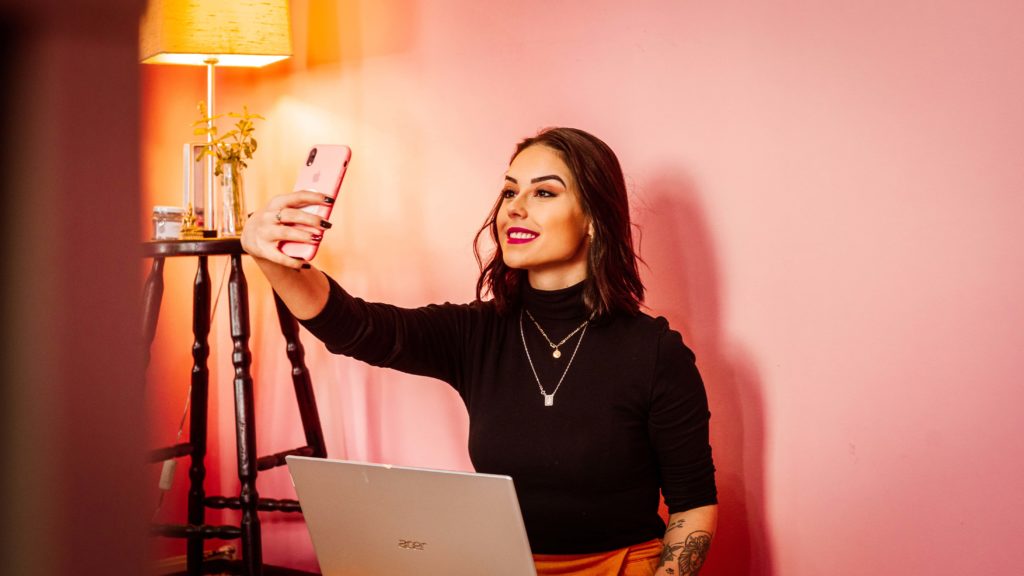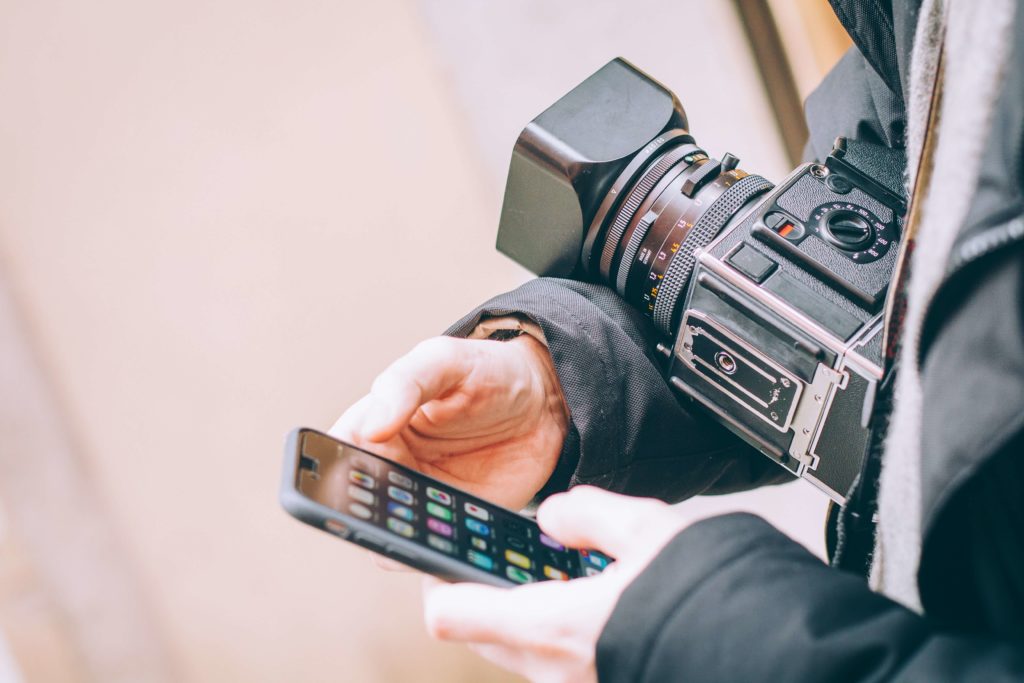If you work in social media marketing, you’re probably familiar with influencer marketing and its growing popularity among companies of different sizes.
Influencer marketing has become an integral part of many social media marketing strategies in 2022. No wonder why marketers are eager to learn how to create a successful influencer marketing campaign.
But before we jump into the 8 steps needed to launch an effective campaign, let’s first find out what influencer marketing is about.
What is influencer marketing?
Influencer marketing is a marketing and advertising strategy. It involves companies finding content creators and working together with them on a marketing campaign.
And the good news is that you don’t need Ryan Reynolds or any other celebrity to kickstart an influencer marketing campaign.
According to some estimations, there are around 42 million influencers in the world. And this number is expected to grow even further.
This rapid growth is not surprising: not every influencer is a Hollywood celebrity. In fact, if you have more than 1,000 followers on Instagram, you are already an influencer.

There are different types of influencers:
- Nano (1,000 – 10,000 followers)
- Micro (10,000 – 100,000 followers)
- Macro (100,000 – 1,000,000 followers)
- Mega (more than 1 million followers)
Although it might seem that only campaigns with mega influencers, or celebrities, can deliver tangible results, multiple studies confirm that micro-influencers have higher engagement and better conversion rates than macro-influencers.
Besides, nano- and micro-influencers have built communities around specific interests (for example, fitness, nutrition, animal facts, etc.). By partnering with smaller influencers, brands can reach these niche audiences.
Why is influencer marketing popular?
The short answer is: It works.
- 90% of marketers consider influencer marketing to be an effective form of advertising.
- 84% of companies want to work with a social media influencer in the next year.
- 71% of marketing professionals are satisfied with the quality of traffic generated by influencer marketing campaigns.
Influencer marketing is a rather versatile tool that is used by companies to achieve different marketing goals:
- It helps increase brand awareness. For example, a successful campaign can reach millions of users on a single social media platform (or it can also be a cross-platform campaign).
- It makes it easy to target a niche audience and connect with this audience on a deeper level.
- It helps brands to gain trust and establish authority. For example, companies can partner with influencers who are experts in a particular field.
How to launch a successful influencer marketing campaign
There’s no one-size-fits-all approach to influencer marketing because every campaign is unique.
Nevertheless, there are 8 common steps that every successful influencer marketing campaign follows.
Let’s have a look at each of these steps in more detail.
Step 1: Define your goal
Before launching an influencer marketing campaign, make sure that you have a clear understanding of what you want to achieve.
Do you want to increase brand awareness? Boost engagement? Gain more followers on social media?
Depending on your goals, you need to set realistic key performance indicators (KPIs). It’s better to limit the number of KPIs to 3-5 per goal. Otherwise, it might get overwhelming to track too many different indicators.
If you’ve never run an influencer marketing campaign before, you might find it challenging to set a KPI. In this case, you can use publicly available benchmarks for similar campaigns. For example, many influencer marketing agencies share the results of their campaigns and provide either expected or actual KPIs.
Step 2: Know your target audience
While a goal sets the general direction of your campaign, the target audience sets its tone. That’s why a marketing campaign should start with a clear understanding of your target audience.
There are other reasons why knowing your target audience is important:
- It helps you choose a specific platform for your campaign. There exist dozens of social media platforms. But it doesn’t mean that you need to run a campaign on every single one of them. If you know your target audience, you also know where they spend the majority of their time.
- It will make it easier to find the right influencer. There are millions of influencers on every social media platform and they create content in different categories. If you know what your audience is interested in, you can identify those influencers who are most likely to reach your target audience (and whom your target audience is most likely to listen to).

Step 3: Create a brief for influencers
Once you have a specific goal in mind and know your audience, it’s time to create a brief.
Although it’s difficult to cover every possible recommendation in the scope of this blog post, there are several things to keep in mind for your brief:
- Create a simple yet powerful advertising message. Keep in mind authenticity and the current agenda (for example, sensitive political and social events). You need to see the message through the eyes of your audience.
- Leave room for creativity. Although you are an expert when it comes to your product or services, influencers know their followers better than you do. Your brief should outline your expectations, general guidelines but ideally, it shouldn’t micromanage influencers. After all, a well-crafted message will fit the influencer’s overall narrative. If it’s too different from influencers’ usual posts, their followers might react negatively.
Step 4: Shortlist influencers
When it comes to finding influencers, you might already have someone in mind. Large corporations prefer to outsource influencer marketing to agencies or subscribe to an analytical platform but smaller companies usually try to find influencers either with Google or social media search.
To shortlist influencers, you need to develop a list of criteria:
- Social media platform. A potential influencer should have presence on a social media platform where your audience spends the majority of their time.
- Format. Do you want to use videos or Instagram stories? Depending on your goal and your target audience, there are different ways of delivering your message. Not all influencers are good at creating all types of content.
- Content quality. Pay attention to the influencer’s quality of content. Do you want your brand to be associated with this content? Does the influencer have a lot of spammy or irrelevant comments? Make sure that you double-check everything that looks suspicious.
- Style. Is their style consistent? Does it match your brand guidelines?
- Audience quality. Influencer fraud is still quite common. There are influencers who buy followers, likes, comments, etc. And it’s not easy to detect fraud. The Entrepreneur magazine listed three ways that can help companies avoid influencer fraud.

Step 5: Reach out to influencers
Once you shortlist candidates, it’s time to reach out to them:
- Make it personal. Don’t send the same message to everyone. Influencers put a lot of time and effort into creating high-quality content. It’s an opportunity for you to show that you did some research on what a particular influencer is famous for and why you want to partner with them.
- Communicate your expectations and brand guidelines in advance. It can be frustrating for both parties if the requirements and contract terms change multiple times.
- Actively manage an influencer database. If you are serious about influencer marketing, it’s time to start thinking about how to manage and nurture these relationships. As the number of influencers on your list grows, it will become challenging to keep a track of everything in a spreadsheet and build meaningful relationships. That’s why companies often choose an action-focused CRM system that allows a proactive approach. Such systems help companies actively manage an influencer database instead of just keeping notes and storing contact information.
Step 6: Measure results
Is your influencer marketing campaign successful? You’ll never know if you don’t constantly monitor KPIs before, during, and after the campaign.
Influencer marketing campaigns are multi-level and complex. Some of them will have a long-term effect. Therefore, not all results will be visible straight after your campaign finishes. In some cases, you’ll need to wait a few months.
Besides, if you constantly monitor KPIs, you’ll be able to spot some areas for improvement while the campaign is still running.
On top of that, you can study the results and decide what can be improved in the future. It’s the learning by doing approach at its finest.
Step 7: Support your influencer campaign with organic content
While your influencer campaign is running, it doesn’t mean that all other marketing activities should stop.
You can support your influencer marketing campaign with organic content. There are at least 10 ways how you can build a strong social media presence and increase engagement.
Step 8: Re-use influencer-generated content
You can leverage and repurpose the content that was generated during your influencer marketing campaign.
You can use influencers’ posts in a social media paid campaign or produce quotes from influencers’ posts, GIFs from their product review videos, Twitter threads based on their tips, etc. You can also use Kontentino’s advanced analytics tool to keep an eye on how well your repurposed content is performing.
Final word: Three success elements of Influencer marketing
These 8 steps are the milestones of your influencer marketing campaign. There are many smaller steps in-between that should not be neglected. This list was created to provide you with an overview of how a successful influencer marketing campaign is planned, launched, and coordinated.
Influencer marketing is a complex process that involves several parties, is time-consuming and multi-level.
But if combined with a thoughtful strategy, powerful tools, and consistency, it can complement your social media strategy and boost your marketing efforts.





